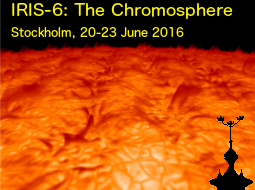Speaker
David Buehler
(Max Planck Institute for Solar System Research)
Description
The formation of an Ha filament in active region (AR) 10953 is described.
Observations from the Solar Optical Telescope (SOT) aboard the Hinode satellite
starting on 27th April 2007 until 1st May 2007 were analysed. 20 scans of the 6302A
Fe I line pair recorded by SOT/SP were inverted using the SPINOR code. The inversions
were analysed together with SOT/BFI G-band and Ca II H and SOT/NFI Ha observations.
Following the disappearance of an initial Ha filament aligned along the polarity
inversion line (PIL) of the AR, a new Ha filament formed in its place some 20 hours
later, which remained stable for at least 1.5 days. The creation of the new Ha
filament was driven by the ascent of horizontal magnetic fields from the photosphere
into the chromosphere at three separate locations along the PIL. The magnetic fields
at two of these locations were situated directly underneath the initial Ha filament
and formed orphan penumbrae already aligned along the Ha filament channel. The 700 G
orphan penumbrae were stable and trapped in the photosphere until the disappearance
of the overlying initial Ha filament, after which they started to ascend into the
chromosphere at 10pm5 m/s. Each ascent was associated with a simultaneous magnetic
flux reduction of up to 50% in the photosphere. The ascended orphan penumbrae formed
dark 'seed' structures in Ha in parallel with the PIL, which elongated and merged to
form an Ha filament. The filament channel featured horizontal magnetic fields of on
average 260 G at log(tau)=-2 suspended above the nearly field-free lower photosphere.
The fields took on an 'inverse' configuration at log(tau)=-2 suggesting a flux rope
for the new Ha filament. The orphan penumbral fields ascend into the chromosphere
9-24 hours before the Ha filament is fully formed.
Author
David Buehler
(Max Planck Institute for Solar System Research)

